Historic Castles, Churches And A Centuries-Old Sauna!
Dr Anne in Ethiopia: How a swarm of bees saved an historic church from destruction is one of the intriguing events Dr Anne Small is learning about as she tours through Ethiopia, following a day at the hotel when gunfire rang out in the streets …
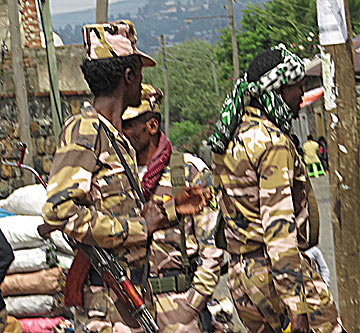 In the morning we continued our tour of Gondar which had been cut short by the rioting of the losing soccer fans. There were police and army on every street corner, in the city square and down most main streets. My photos are only of their sides or backs – it’s too scary to take a front-on photo of these guys.
In the morning we continued our tour of Gondar which had been cut short by the rioting of the losing soccer fans. There were police and army on every street corner, in the city square and down most main streets. My photos are only of their sides or backs – it’s too scary to take a front-on photo of these guys.
EARLIER BLOG: Fans From A Losing Soccer Team & Guns Don’t Mix
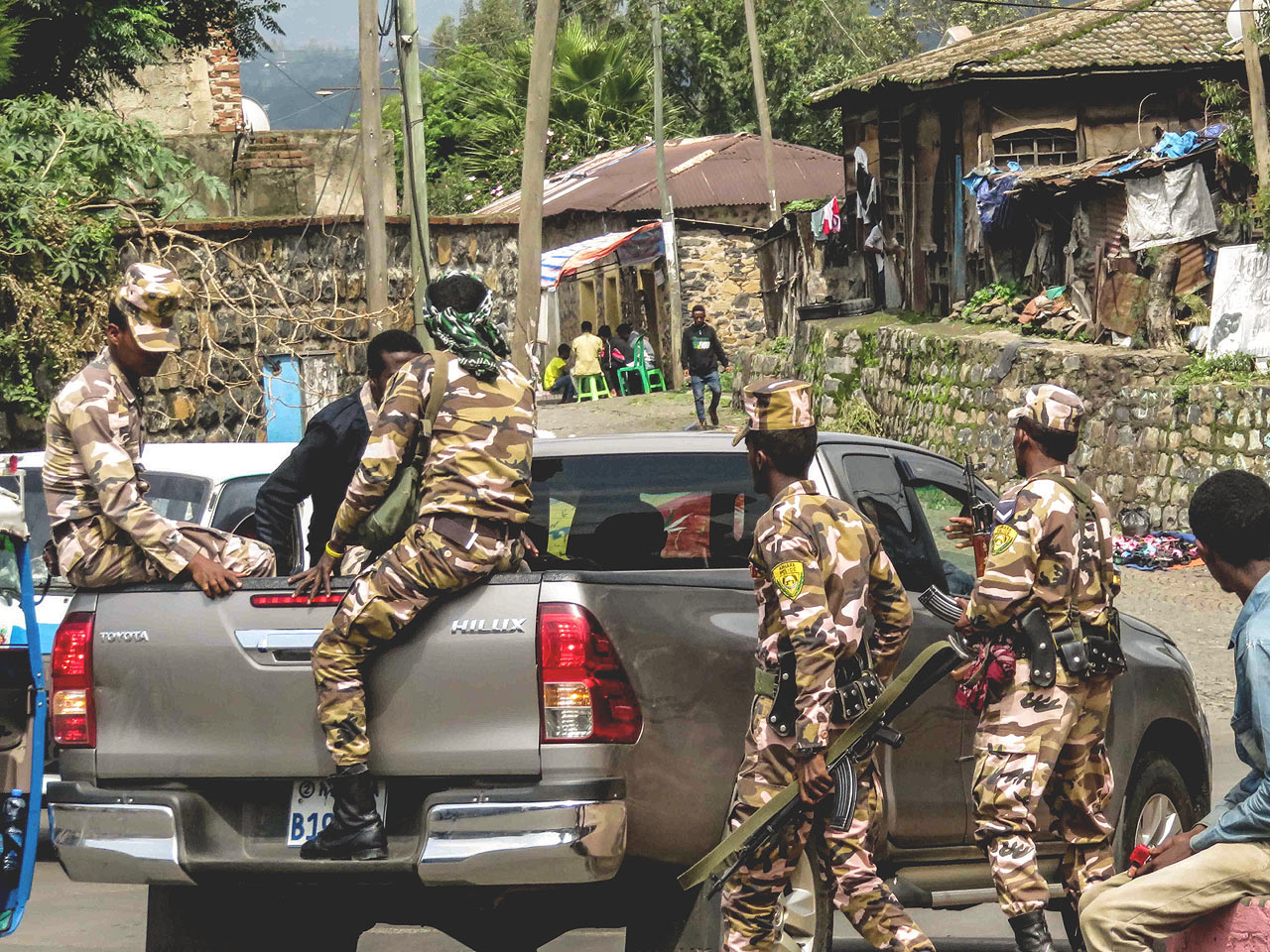
We went to the Royal Enclosure Fasil Ghebbi, which is home to the castles built by the emperors in the Axomite traditions, and unlike any other in Africa.
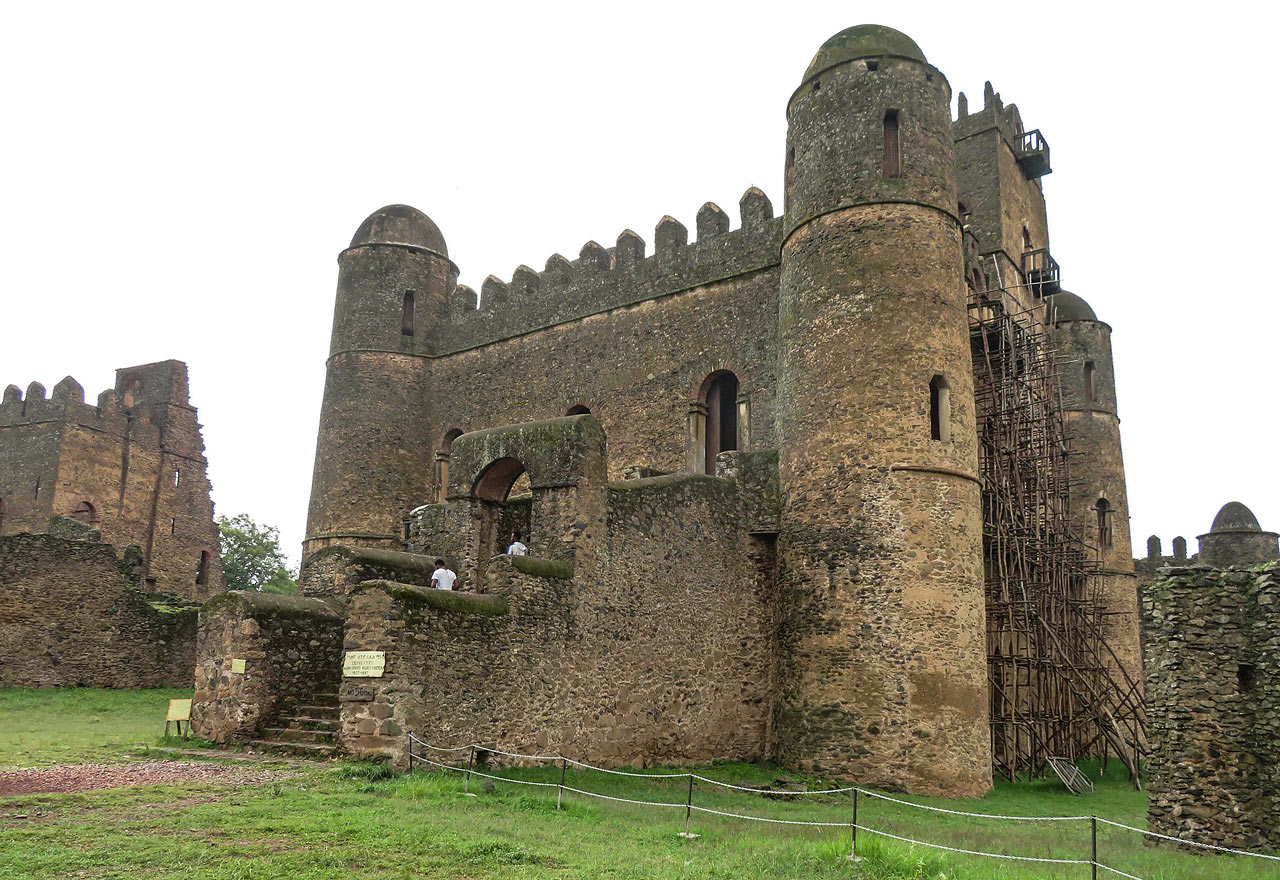
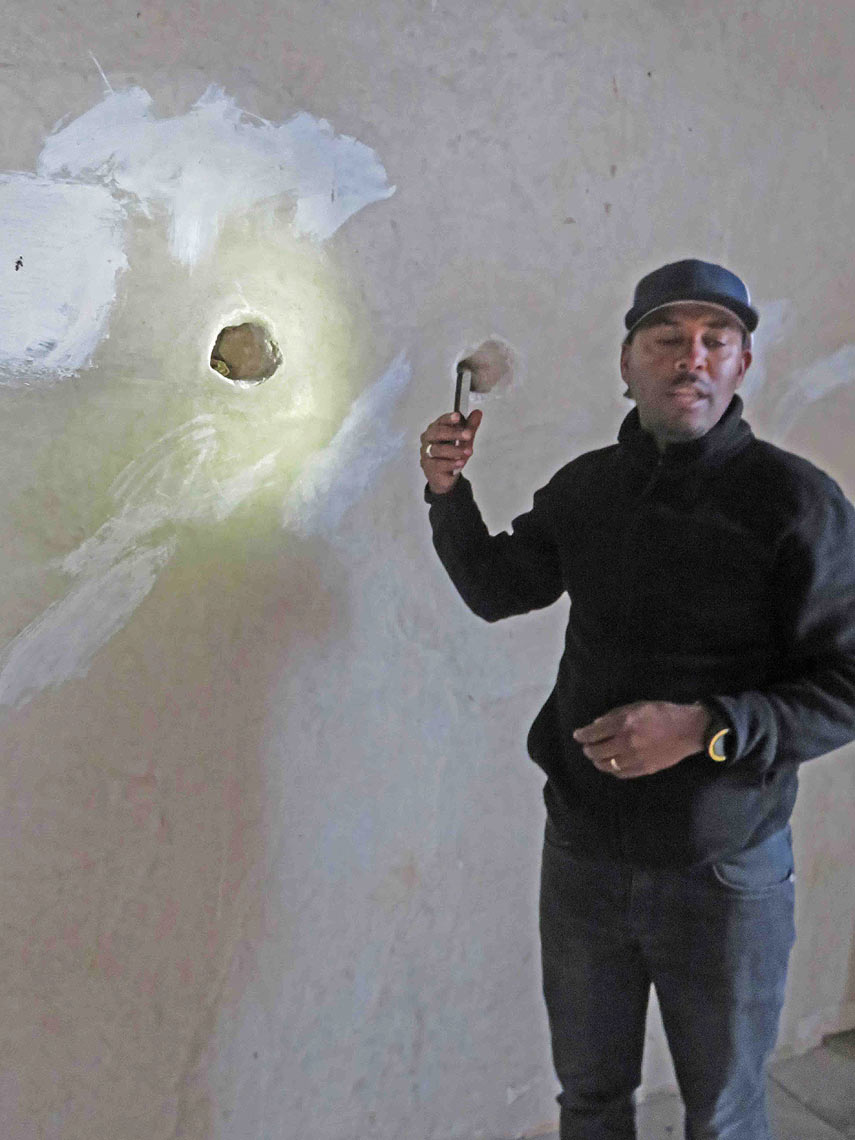 One photo shows our guide Kibrrom pointing to holes in the wall of the royal dining hall and the out-of-focus photo shows a broken-off cow’s horn. One of the delicacies was raw cow, so a large shoulder would be hung from the horn in the wall and slices of raw meat cut from it.
One photo shows our guide Kibrrom pointing to holes in the wall of the royal dining hall and the out-of-focus photo shows a broken-off cow’s horn. One of the delicacies was raw cow, so a large shoulder would be hung from the horn in the wall and slices of raw meat cut from it.

The other photo I like is of a hole in the floor leading down to where a fire was burning to heat up water that was in a large container at the level at which we were standing … in other words, a sauna, centuries old!
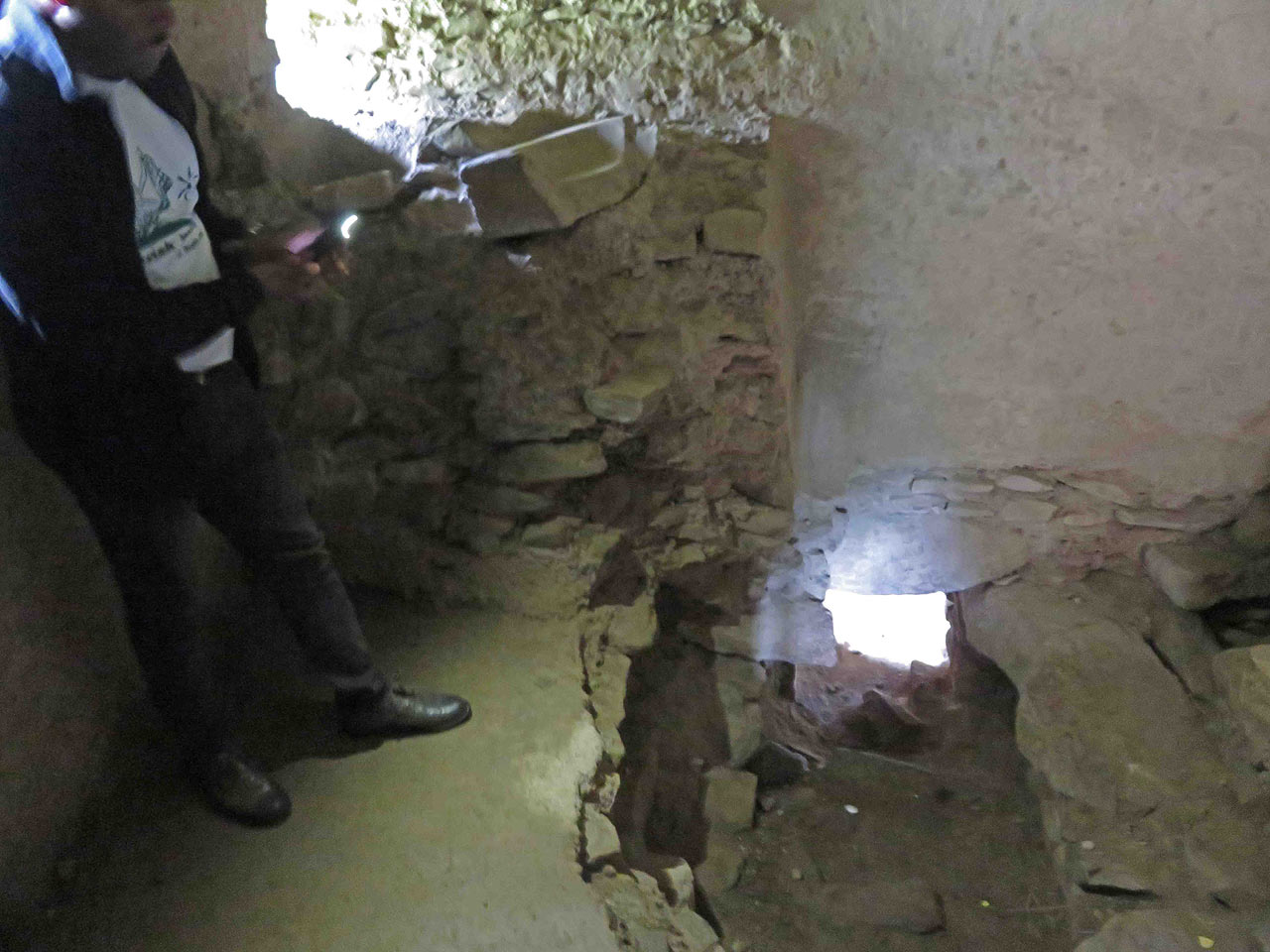
We then went to the famous church of Debre Berham Selassie. This church is the last of 44 Orthodox churches that were destroyed by the Madhist pillaging in 1888. It was saved by the swarms of bees that were released from beehives in the trees surrounding the church and this forced the Madhist to flee.
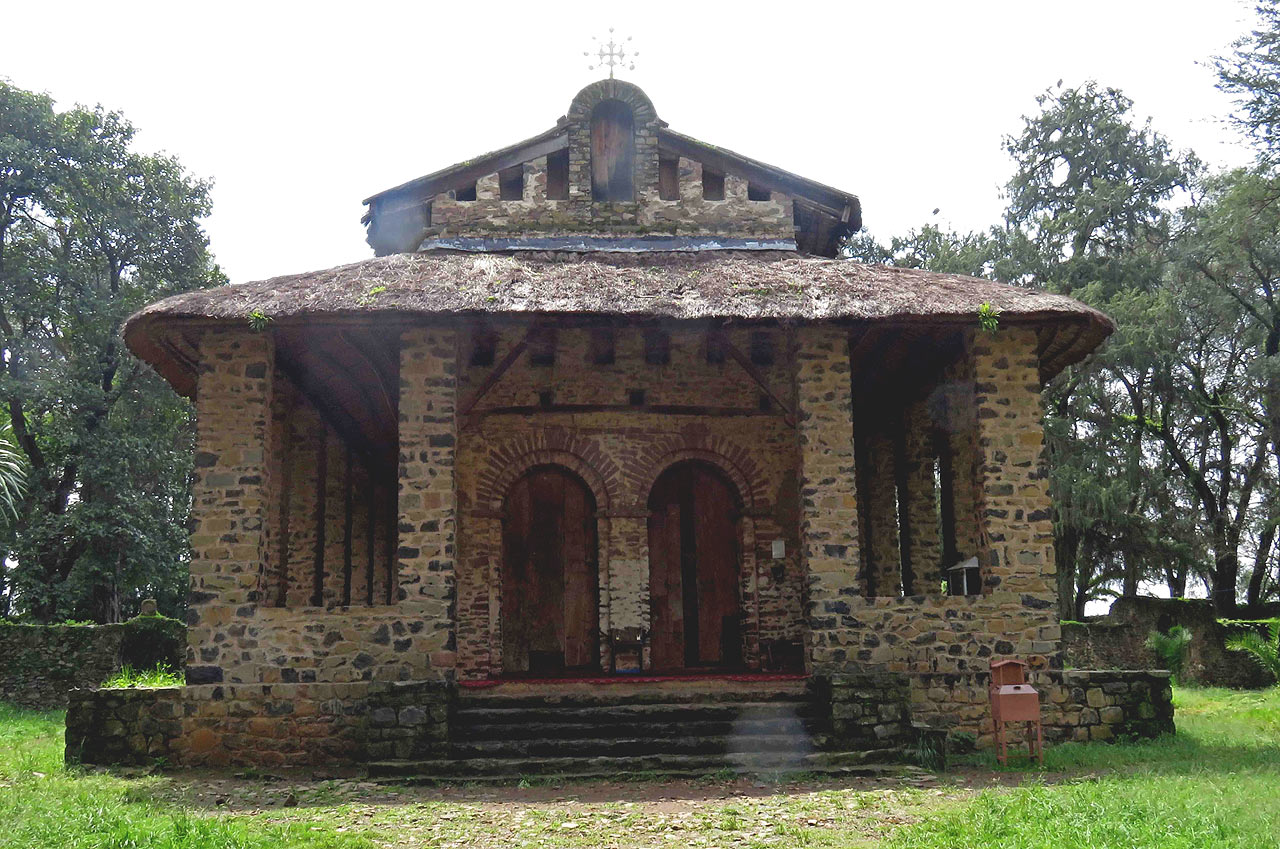
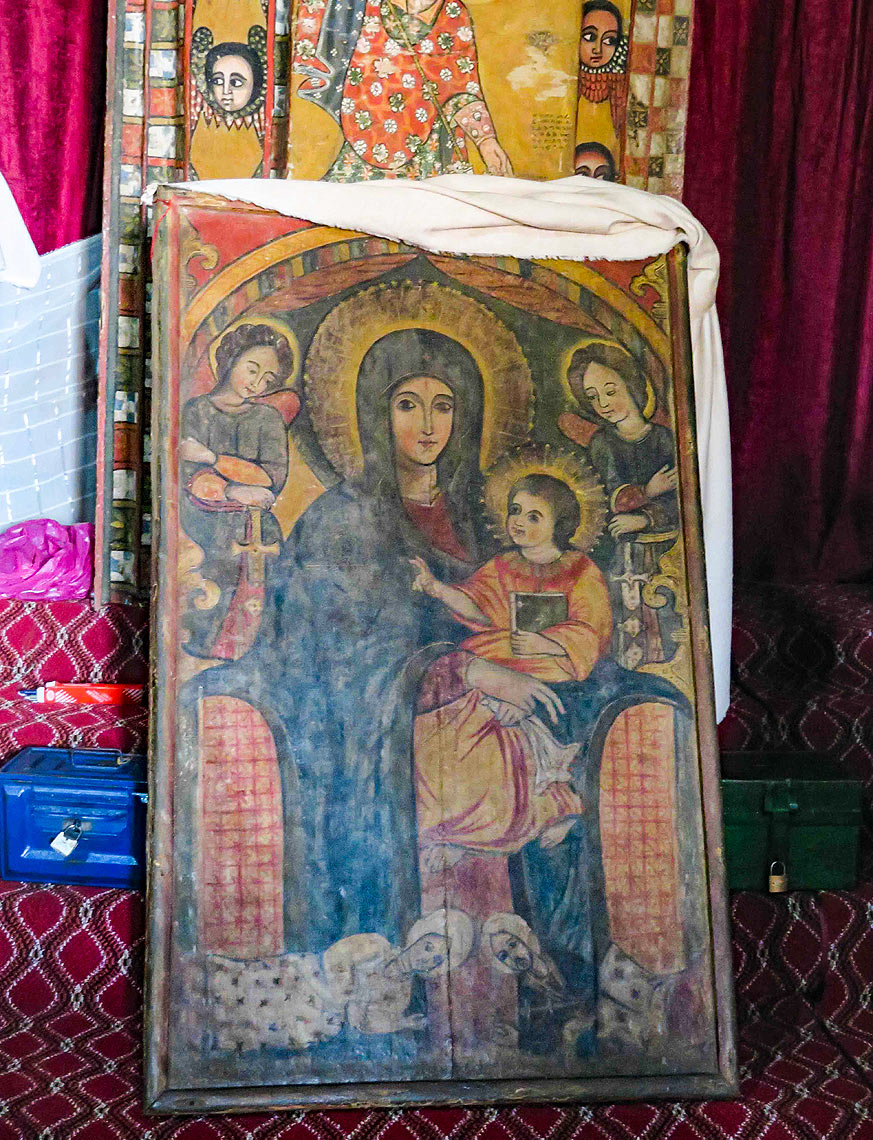 It is quaint with similar paintings that we saw in a monastery at Lake Tana but, according to the priest, the painting that he unveiled for us is known as the Mona Lisa of Ethiopia. It is a painting of the Virgin Mary who is very important in their religion and her eyes follow you as you walk across in front of her, as I did.
It is quaint with similar paintings that we saw in a monastery at Lake Tana but, according to the priest, the painting that he unveiled for us is known as the Mona Lisa of Ethiopia. It is a painting of the Virgin Mary who is very important in their religion and her eyes follow you as you walk across in front of her, as I did.
I’ve learned that Ethiopia is a very religious country, with three quarters of the population being Coptic Christian. They go to church every Sunday and often during the week. Most women wear white dresses and the men a white wrap. Churches are dotted throughout the countryside, usually painted in the national colours of red, yellow and green. They are always surrounded by native trees so that people can study them.
I can’t wait for tomorrow, with a visit planned to observe an amazing African animal – the baboon!







